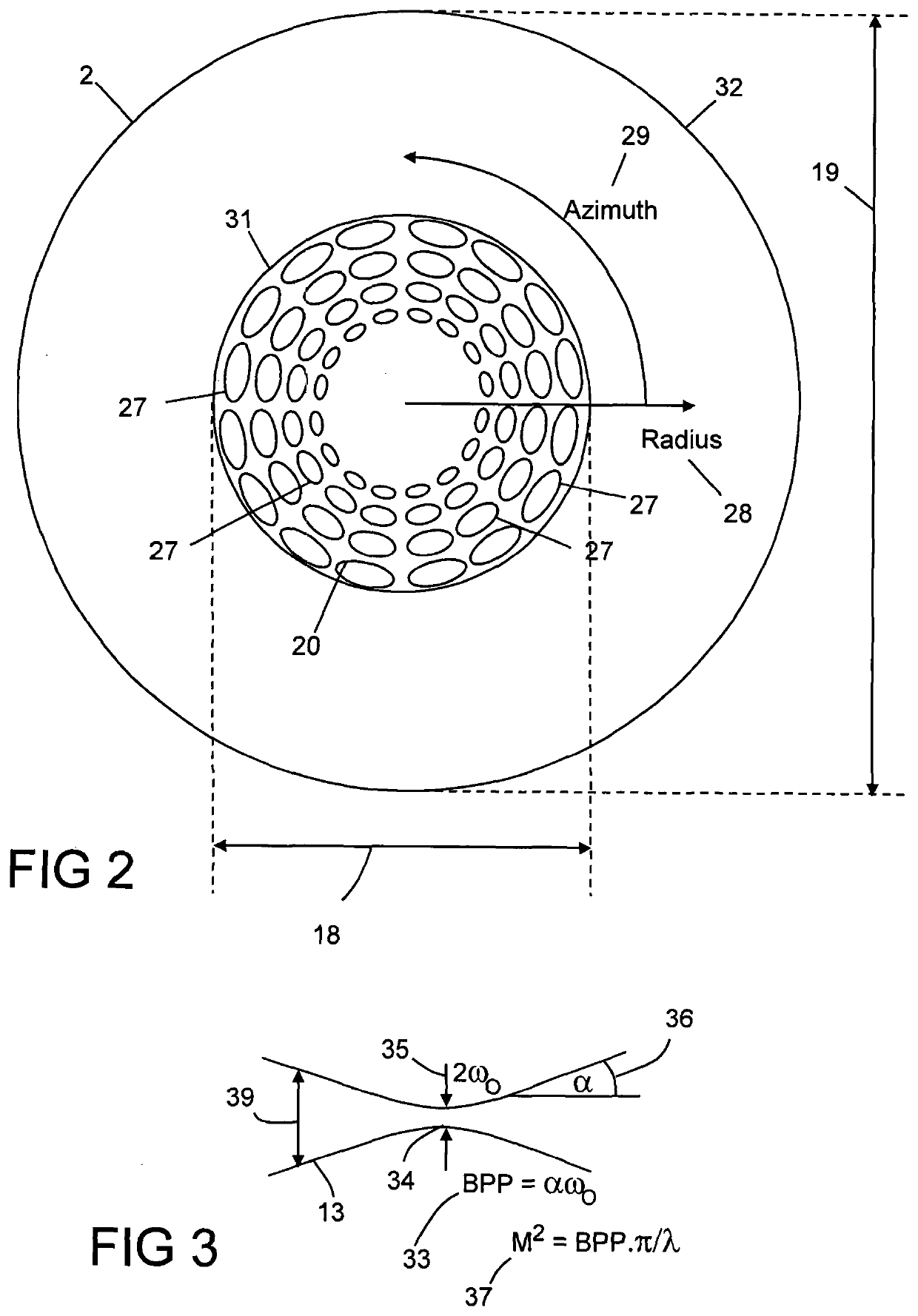Apparatus And Method For Laser Processing A Material
a technology of material laser and apparatus, applied in the direction of optical elements, manufacturing tools, instruments, etc., can solve the problems of increasing processing costs, slowing down the construction of larger structures, and expensive external optics with such flexibility
- Summary
- Abstract
- Description
- Claims
- Application Information
AI Technical Summary
Benefits of technology
Problems solved by technology
Method used
Image
Examples
Embodiment Construction
[0105]FIG. 1 shows apparatus for laser processing a material 11, which apparatus comprises an optical fibre 2, at least one squeezing mechanism 3, and a lens 4, wherein:[0106]the optical fibre 2 is a multimode optical fibre;[0107]the optical fibre 2 is such that laser radiation 13 is able to propagate along the optical fibre 2 in a first optical mode 21 and in a second optical mode 22;[0108]the squeezing mechanism 3 comprises at least one periodic surface 6 defined by a pitch 7; and[0109]the periodic surface 6 is located adjacent to the optical fibre 2; and the apparatus is characterized in that:[0110]the pitch 7 couples the first optical mode 21 and the second optical mode 22 together;[0111]the first optical mode 21 is defined by a first mode order 24, and the second optical mode 22 is defined by a second mode order 25 which is higher than the first mode order 24;[0112]the squeezing mechanism 3 is configured to squeeze the periodic surface 6 and the optical fibre 2 together with a ...
PUM
| Property | Measurement | Unit |
|---|---|---|
| Length | aaaaa | aaaaa |
| Length | aaaaa | aaaaa |
| Length | aaaaa | aaaaa |
Abstract
Description
Claims
Application Information
 Login to View More
Login to View More - R&D
- Intellectual Property
- Life Sciences
- Materials
- Tech Scout
- Unparalleled Data Quality
- Higher Quality Content
- 60% Fewer Hallucinations
Browse by: Latest US Patents, China's latest patents, Technical Efficacy Thesaurus, Application Domain, Technology Topic, Popular Technical Reports.
© 2025 PatSnap. All rights reserved.Legal|Privacy policy|Modern Slavery Act Transparency Statement|Sitemap|About US| Contact US: help@patsnap.com



